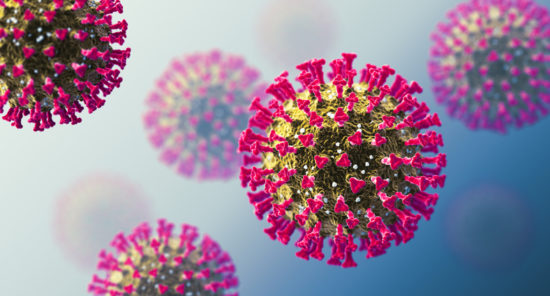Credit: Original article published here.According to the United States Renal Data System, use of home dialysis has increased since 2017. Across all payer types, the greatest growth has been seen in home hemodialysis. The Advancing American Kidney Health (AAKH) executive order set a goal of initiating home dialysis or preemptive kidney transplant for 80% of patients with incident end-stage renal disease (ESRD). While new payment models from the Centers for Medicare & Medicaid Services (CMS) reward payers for achievement of higher rates of home dialysis, use of home hemodialysis is lowest among patients with Medicare Advantage health insurance coverage: 1.3% versus 3.0% among patients with original Medicare fee-for-service (FFS) coverage without Medicaid. During a poster session at the National Kidney Foundation Spring Clinical Meetings 2023, Stephan Dunning, MBA, and colleagues at Outset Medical, Inc., San Jose, California, reported estimates of the per-member per-month (PMPM) costs for a Medicare Advantage health plan and 5-year savings generated by incentivizing home dialysis aligned with the AAKH goal. The poster was titled Home Hemodialysis Can Help Reduce Total Cost of Care Among Medicare Advantage Members With ESRD. The researchers modeled a Medicare Advantage health plan with 500 members on dialysis. They included inputs from
Credit: Original article published here.The majority of patients receiving peritoneal dialysis have end-stage kidney disease (ESKD). However, according to Nicholas Seidler, MD, and colleagues, current data on peritoneal dialysis in patients with critical illness focus on utilization of the modality in patients with acute kidney injury. The researchers conducted a study designed to examine the mortality and temporal trends for patients receiving peritoneal dialysis in the setting of critical illness. Results of the retrospective cohort study were reported during a poster session at the National Kidney Foundation Spring Clinical Meetings 2023. The poster was titled Outcomes in Critical Care Admissions in Peritoneal Dialysis Patients. The study cohort included adult patients with ESKD receiving peritoneal dialysis who were admitted to an intensive care unit (ICU) at Rhode Island Hospital, Providence, and Miriam Hospital, Providence, between January 1, 2015, and January 1, 2022. Data on dialysis modalities used in the ICU, admission outcomes, and 1-year outcomes were collected. The analysis included 67 critical care admissions among 45 patients. Fifty-two percent were female, and mean age was 54 years. During the ICU admission, 64% received peritoneal dialysis, 6% received hemodialysis, 9% received peritoneal dialysis and hemodialysis, and 16% received peritoneal dialysis, hemodialysis, and
Credit: Original article published here.According to Dua Abedeen, MPH, and colleagues at SUNY Downstate Health Sciences University, Brooklyn, New York, undue financial stress may force patients to choose between medication and other living expenses, resulting in inferior rates of medication adherence. Unless directly asked, patients may not disclose issues with finances to their provider. Using a Likert scale survey, the researchers interviewed a random convenience sample of 24 patients receiving dialysis and 16 kidney transplant recipients in an inner-city area. Results of the interviews were reported during a poster session at the National Kidney Foundation Spring Clinical Meetings 2023 in a poster titled Association of Financial Stressors With Medication Nonadherence in Inner-City Patients With ESKD. Mean age of the interviewed patients was 59 years, 77% (n=30) identified as Black, 70% (n=26) were men, 57% (n=20) had less than a college education, and 65% (n=13) made less than $40,000 per year. Mean dialysis vintage was 5.2 years, and mean time since transplant was 4.0 years. All of the patients had insurance. More than half of the cohort (52%, n=19) said that finances affected their ability to control their medical condition, 42% (n=15) said they had difficulty meeting monthly bills, and 40%
Credit: Original article published here.The most common renal replacement therapies for patients with end-stage renal disease (ESRD) are peritoneal dialysis and hemodialysis. More than 500,000 individuals in China are receiving dialysis treatment, and more than 90% of patients on dialysis experience renal anemia. Anemia has been associated with increased risk for cardiovascular complications, diminished quality of life, and mortality. Insufficient erythropoietin (EPO), iron deficiency, and inflammation are among the main causes of renal anemia. In the past 30 years, erythropoiesis-stimulating agents (ESAs) have been used to treat EPO deficiency. However, for patients with poor initial responses to ESAs, increasing the dose to achieve target hemoglobin levels has been associated with an increase in the risk of cardiovascualr events and death. Approximately 10% of patients treated with ESAs have EPO hyporesponsiveness, defined as a sustained substandard hemoglobin (<10.0 g/dL), despite sufficient iron levels (ferritin >100 ng/dL), and exogenous EPO administration (≥6000 IU/week). Management of patients with EPO hyporesponsiveness is challenging. When activated, hypoxia-inducible factors (HIFs) induce the production of EPO. Roxadustat is a prolyl hydroxylase inhibitor that can simulate hypoxic stimulation to stabilize HIF expression under normoxic conditions. Junjie Chen, MD, and colleagues conducted a single center, before and after treatment,
Credit: Original article published here.Patients with acute kidney injury (AKI) are at risk of progression to chronic kidney disease (CKD) and end-stage renal disease (ESRD). AKI is a common complication associated with COVID-19. Thiago Terzian Ganadjian, MD, and colleagues at Universidade Federal Sao Paulo, Sao Paulo, Brazil, conducted a study to examine the frequency and association of clinical variables in patients who developed CKD and ESRD following AKI related to COVID-19. The researchers reported results of the 1-year follow-up study during a poster session at the American Society of Nephrology Kidney Week 2022. The poster was titled The Emergence of CKD After COVID-19 Related AKI. The study included 182 survivor patients who were admitted to the center’s ward and intensive care unit with COVID-19 between April 2020 and March 2021. Inclusion criteria were age ≥18 years and COVID-19 confirmed on reverse transcription-polymerase chain reaction test. Exclusion criteria included ESRD prior to hospitalization. Kidney Disease: Improving Global Outcomes criteria were used to define AKI and CKD. The researchers assessed the frequency of AKI and then compared selected clinical variables in two subgroups: CKD after COVID-19-related AKI and non-CKD after COVID-19. Univariate and multivariate analyses were conducted. A total of 137 patients






